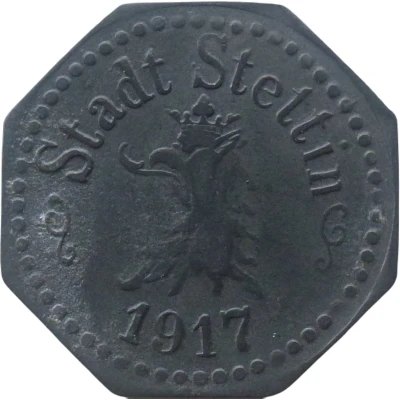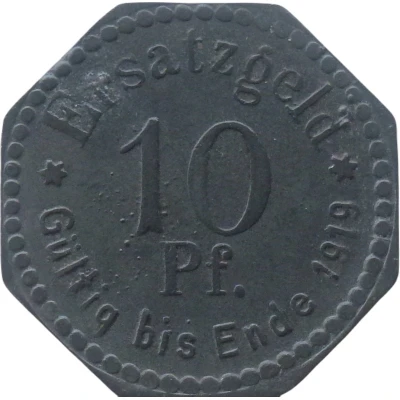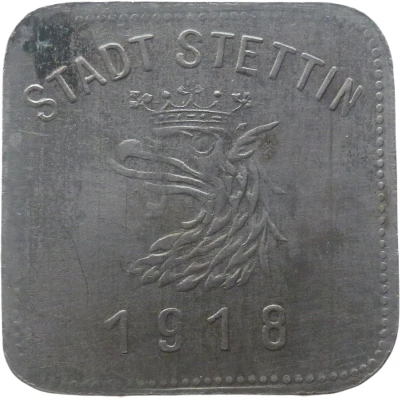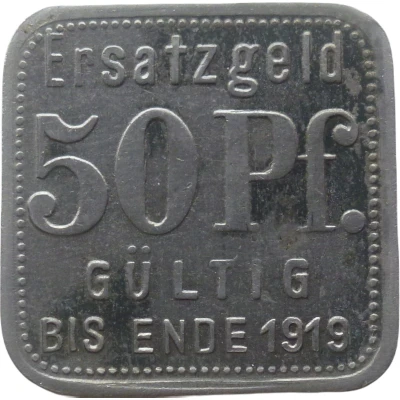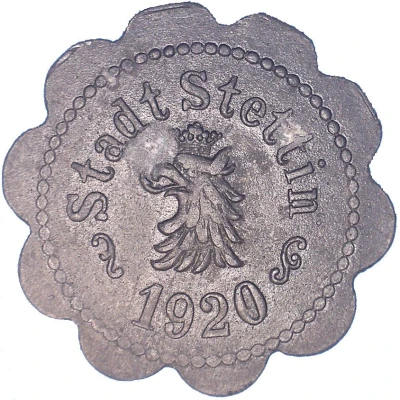
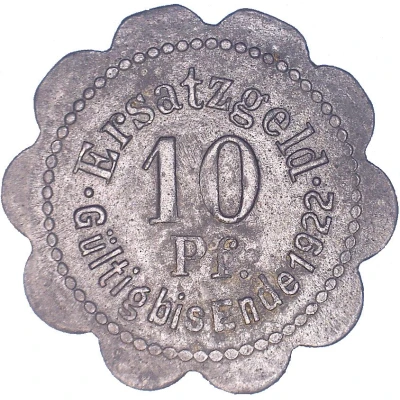

© Ringgy (CC BY)
10 Pfennigs - Stettin
1920 year| Zinc | 1.4 g | 21.4 mm |
| Issuer | City of Stettin (notgeld) (Prussian province of Pomerania) |
|---|---|
| Period | Weimar Republic (1918-1933) |
| Type | Standard circulation coin |
| Year | 1920 |
| Value | 10 Pfennigs (10 Pfennige) (0.10) |
| Currency | Mark (1914-1924) |
| Composition | Zinc |
| Weight | 1.4 g |
| Diameter | 21.4 mm |
| Thickness | 0.8 mm |
| Shape | Scalloped (with 10 notches) |
| Technique | Milled |
| Orientation | Medal alignment ↑↑ |
| Demonetized | Yes |
| Updated | 2024-10-04 |
| Numista | N#44811 |
|---|---|
| Rarity index | 67% |
Reverse
Pearl rim, legend surrounding denomination
Script: Latin
Lettering:
Ersatzgeld
10
Pf.
● Gültig bis Ende 1922 ●
Edge
Scalloped (x10)
Comment
Ø 21.3-21.5mmInteresting fact
The 10 Pfennigs - Stettin 1920 coin from the City of Stettin (notgeld) in the Prussian province of Pomerania is interesting because it was made of zinc, which is a relatively rare material for coins, especially for circulation coins. Most coins are made of more durable materials like copper, nickel, or silver, but the use of zinc in this case was likely a cost-saving measure, as zinc is a less expensive material. Despite being made of a less durable material, the coin still has a relatively high weight of 1.4 grams, which is unusual for a coin of its size and denomination. This coin is a unique example of how the economic conditions and materials available at the time can impact the design and production of currency.
